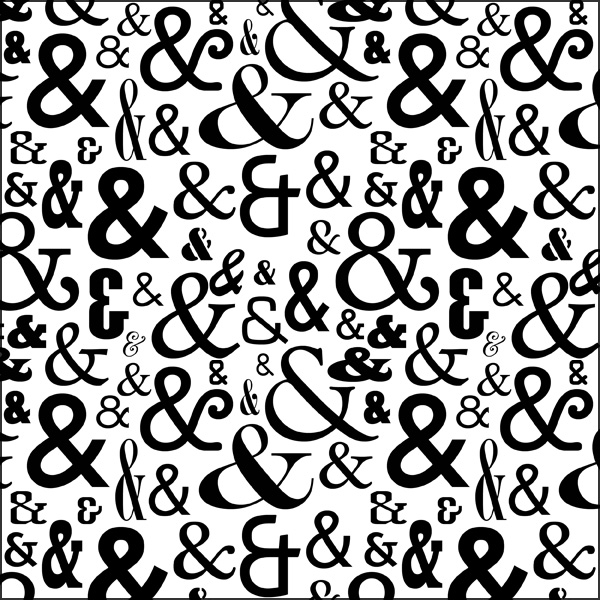The ampersand is an example of a ligature, which occurs
where two or more graphemes are joined as a single glyph. Makes perfect sense,
right? Probably not (it didn’t mean much to me the first time I read it), so
let’s break it down.
A grapheme is a fundamental unit of written language, like a
letter, character (for languages like Chinese), number, or punctuation mark.
A glyph is an individual mark you might make while writing
that contributes to the meaning of what you are writing, like this glyph from a
Mayan calendar:
A ligature combines multiple graphemes into a single glyph—in
the case of the ampersand, it is a combination of the letters of et, which means “and” in Latin. This
helps to show how the symbol itself evolved:
The ampersand was used at least as early as the 1st
century A.D., when the letters E and T were combined as a ligature for “and” in
Roman cursive. In the next few hundred years, use of ligatures increased
widely, and ampersands continued to be used and transformed to the writing
styles of individuals. In around the 7th century, as the Latin script
led up to the Carolingian miniscule, the use of ligatures declined overall, but
for whatever reason, the et-ligature continued to be popular.
The ampersand has made its way into a number of Latin-based
languages, and is sometimes listed as a letter of the alphabet.



Since the second image from the bottom is so hard to read on this background, I put a link to the image on "this" at the beginning of the sentence that introduces it. If I have a spare minute later in the day, I can put a white background on the image itself, but for now, you can check it out there.
ReplyDeleteIn your last link, I found it interesting that printers popularized the ampersand (in both the Roman style and Italic style). This use of shorthand made it easier for one to write and print. This meant that people could get the same message written in a faster time with fewer materials used.
ReplyDeleteThe ampersand is really interesting. I like it a lot as a calligrapher because mastering the different styles of ampersand it marks the script as distinctively of that style. It is also one of the most versatile symbols when it comes to flourishes. here is a website with several different ampersands: http://www.thedesigncubicle.com/2009/02/the-mesmerizing-curves-of-ampersands/
ReplyDeleteI also wanted to expand on Misa's comment about space saving in printing. The ampersand has not always been limited to meaning and. I have helped transcribe printed books that use the ampersand in virtually every instance that an e and a t appear together. A good example of this is Lectures on Faith or Teachings of the Prophet Joseph Smith. In these books (these are not ones I helped transcribe), every etc is &c, which can be hard to read when you don't know what is going on.
Uggg. I commented already but it disappeared. I was going to say that it is interesting how this evolved. I was writing an assignment today and noticed that my the looks pretty much nothing like a the. It always looks the same but it is kind of a just barely related to the t h and e. I wonder if this is how the & evolved or if it was a conscious thing. Maybe some day we will all be writing a 'the' symbol that I make popular with my bad handwriting.
ReplyDeleteI am so glad you posted this! I have always wondered where in the world the ampersand was from, and yes I did know that it was called that but I must admit I forgot that it was called that. I have definitely noticed a theme of written language and oral language well language in general- evolution. Language is evolving everyday around us within the same culture and across different cultures. This is a wonderful example of micro evolution of written language.
ReplyDeleteAlicia - that is interesting, about the ampersand being used anywhere "ET" was found. What about in the middle of other words, like lock& or te&h?
ReplyDeleteHmm... In response to you Lauren, I don't think so. Etcetera was a special case, where the word actually has the same roots as that &. The "Et" at the beginning of this word is the Latin word for "and", so it corresponds nicely with the & that means the same thing. That's why it was used in that case, I believe.
ReplyDeleteI like this idea of combining symbols to make a quicker, neater one, and I like that Misa brought up shorthand. I definitely use shorthand in my notes, but it is really just fewer symbols standing in the place of a lot more that go in a common arrangement. Like w/o for without and b/tw for between and RXN for reaction (chemistry). I don't usually invent new symbols to take the place of a group or pair of symbols. But I am not sure if someone else could read my notes sometimes (from sloppy handwriting and symbol usage). I also use arrows liberally to connect ideas in a sequence instead of commas or prepositions. Like so: &= "and" -> latin "et" -> ligature= combining the alphabet letters -> evolution in writing and print -> & . It is interesting to think about the other symbols we use in connection with our alphabet, and they can be included in what defines our writing system. Interesting post, Lauren.
Morgan: Yeah, that's kind of what I expected too, but I wasn't sure what Alicia meant in her comment. And I agree; I totally use my own versions of shorthand for certain things. I even find that I have certain combinations of letters that always look a certain way when I write them together, like "ers" or "tt".
ReplyDelete